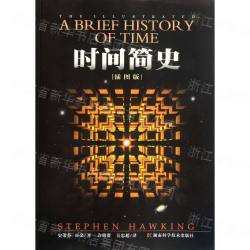-
内容大纲
由哈肯(H.Haken)等著的《原子和量子物理学(第7版)(英文版)》是一部经典教科书,在全面阐述原子和量子物理的实验方法和基本理论的同时,也向读者介绍了该领域的最新动态,如Bell不等式、薛定鄂猫和脱散实验,以及量子计算机、量子信息和原子激光等。本书不但有173例习题,而且还有这些习题的解,这也是本书的另一个突出特点。
目次:原子的质量和大小;同位素;原子核;光子;电子;物质波的基本特性;氢原子的波尔模型;量子理论的数学基础;氢原子的量子力学;强碱原子光谱中的轨道简并提升;轨道磁性和自旋磁性;磁场中原子的实验及其半经典描述;磁场中原子的量子力学分析方法;核自旋和超精细结构;激光;现代光谱方法;量子物理学进展;化学键的量子理论基础。
读者对象:物理专业师生及科研人员。 -
作者介绍
-
目录
List of the Most Important Symbols Used
1.Introduction
1.1 Classical Physics and Quantum Mechanics
1.2 Short Historical Review
2.The Mass and Size of the Atom
2.1 What is an Atom?
2.2 Determination of the Mass
2.3 Methods for Determining Avogadro's Number
2.3.1 Electrolysis
2.3.2 The Gas Constant and Boltzmann's Constant
2.3.3 X—Ray Diffraction in Crystals
2.3.4 Determination Using Radioactive Decay
2.4 Determination of the Size of the Atom
2.4.1 Application of the Kinetic Theory of Gases
2.4.2 The Interaction Cross Section
2.4.3 Experimental Determination of Interaction Cross Sections
2.4.4 Determining the Atomic Size from the Covolume
2.4.5 Atomic Sizes from X—Ray Diffraction Measurements on Crystals
2.4.6 Can Individual Atoms Be Seen?
Problems
3.Isotopes
3.1 The Periodic System of the Elements
3.2 Mass Spectroscopy
3.2.1 Parabola Method
3.2.2 Improved Mass Spectrometers
3.2.3 Results of Mass Spectrometry
3.2.4 Modem Applications of the Mass Spectrometer
3.2.5 Isotope Separation
Problems
4.The Nucleus of the Atom
4.1 Passage of Electrons Through Matter
4.2 Passage of Alpha Particles Through Matter (Rutherford Scattering)
4.2.1 Some Properties of Alpha Particles
4.2.2 Scattering of Alpha Particles by a Foil
4.2.3 Derivation of the Rutherford Scattering Formula
4.2.4 Experimental Results
4.2.5 What is Meant by Nuclear Radius?
Problems
5.The Photon
5.1 Wave Character of Light
5.2 Thermal Radiation
5.2.1 Spectral Distribution of Black Body Radiation
5.2.2 Planck's Radiation Formula
5.2.3 Einstein's Derivation of Planck's Formula
5.3 The Photoelectric Effect
5.4 The Compton Effect
5.4.1 Experiments
5.4.2 Derivation of the Compton Shift
Problems
6.The Electron
6.1 Production of Free Electrons
6.2 Size of the Electron
6.3 The Charge of the Electron
6.4 The Specific Charge elm of the Electron
6.5 Wave Character of Electrons and Other Particles
6.6 Interferometry with Atoms
Problems
7.Some Basic Properties of Matter Waves
7.1 Wave Packets
7.2 Probabilistic Interpretation
7.3 The Heisenberg Uncertainty Relation
7.4 The Energy—Time Uncertainty Relation
7.5 Some Consequences of the Uncertainty Relations for Bound States
Problems
8.Bohr's Model of the Hydrogen Atom
8.1 Basic Principles of Spectroscopy
8.2 The Optical Spectrum of the Hydrogen Atom
8.3 Bohr's Postulates
8.4 Some Quantitative Conclusions
8.5 Motion of the Nucleus
8.6 Spectra of Hydrogen—like Atoms
8.7 Muonic Atoms
8.8 Excitation of Quantum Jumps by Collisions
8.9 Sommerfeld's Extension of the Bohr Model
and the Experimental Justification of a Second Quantum Number
8.10 Lifting of Orbital Degeneracy by the Relativistic Mass Change
8.11 Limits of the Bohr—Sommerfeld Theory.The Correspondence Principle
8.12 Rydberg Atoms
8.13 Exotic Atoms: Positronium, Muonium, and Antihydrogen
Problems
9.The Mathematical Framework of Quantum Theory
9.1 The Particle in a Box
9.2 The Schrodinger Equation
9.3 The Conceptual Basis of Quantum Theory
9.3.1 Observations, Values of Measurements and Operators
9.3.2 Momentum Measurement and Momentum Probability
9.3.3 Average Values and Expectation Values
9.3.4 Operators and Expectation Values
9.3.5 Equations for Determining the Wavefunction
9.3.6 Simultaneous Observability and Commutation Relations
9.4 The Quantum Mechanical Oscillator
Problems
10.Quantum Mechanics of the Hydrogen Atom
10.1 Motion in a Central Field
10.2 Angular Momentum Eigenfunctions
10.3 The Radial Wavefunctions in a Central Field*
10.4 The Radial Wavefunctions of Hydrogen
Problems
11.Lifting of the Orbital Degeneracy in the Spectra of Alkali Atoms
11.1 Shell Structure
11.2 Screening
11.3 The Term Diagram
11.4 Inner Shells
Problems
12.Orbital and Spin Magnetism.Fine Structure
12.1 Introduction and Overview
12.2 Magnetic Moment of the Orbital Motion
12.3 Precession and Orientation in a Magnetic Field
12.4 Spin and Magnetic Moment of the Electron
12.5 Determination of the Gyromagnetic Ratio
by the Einstein—de Haas Method
12.6 Detection of Directional Quantisation by Stern and Gerlach
12.7 Fine Structure and Spin—Orbit Coupling: Overview
12.8 Calculation of Spin—Orbit Splitting in the Bohr Model
12.9 Level Scheme of the Alkali Atoms
12.10 Fine Structure in the Hydrogen Atom
12.11 The Lamb Shift
Problems
13.Atoms in a Magnetic Field:
Experiments and Their Semiclassical Description
13.1 Directional Quantisation in a Magnetic Field
13.2 Electron Spin Resonance
13.3 The Zeeman Effect
13.3.1 Experiments
13.3.2 Explanation of the Zeeman Effect from the Standpoint of Classical Electron Theory
13.3.3 Description of the Ordinary Zeeman Effect by the Vector Model
13.3.4 The Anomalous Zeeman Effect
13.3.5 Magnetic Moments with Spin—Orbit Coupling
13.4 The Paschen—Back Effect
13.5 Double Resonance and Optical Pumping
Problems
14.Atoms in a Magnetic Field: Quantum Mechanical Treatment
14.1 Quantum Theory of the Ordinary Zeeman Effect
14.2 Quantum Theoretical Treatment of the Electron and Proton Spins
14.2.1 Spin as Angular Momentum
14.2.2 Spin Operators, Spin Matrices and Spin Wavefunctions
14.2.3 The Schrodinger Equation of a Spin in a Magnetic Field
14.2.4 Description of Spin Precession by Expectation Values
14.3 Quantum Mechanical Treatment of the Anomalous Zeeman Effect with Spin—Orbit Coupling*
14.4 Quantum Theory of a Spin in Mutually Perpendicular Magnetic Fields, One Constant and One Time Dependent
14.5 The Bloch Equations
14.6 The Relativistic Theory of the Electron.The Dirac Equation
14.7 The Hydrogen Atom in Strong Magnetic Fields*
14.7.1 Rydberg Atoms in Strong Fields
14.7.2 What is Chaos? A Reminder of Classical Mechanics
14.7.3 Quantum Chaos
14.7.4 The Hydrogen Atom in Strong Magnetic Fields and in Low Quantum States
Problems
15.Atoms in an Electric Field
15.1 Observations of the Stark Effect
15.2 Quantum Theory of the Linear and Quadratic Stark Effects
15.2.1 The Hamiltonian
15.2.2 The Quadratic Stark Effect.
Perturbation Theory Without Degeneracy
15.2.3 The Linear Stark Effect.
Perturbation Theory in the Presence of Degeneracy
15.3 The Interaction of a Two—Level Atom
with a Coherent Radiation Field
15.4 Spin and Photon Echoes
15.5 A Glance at Quantum Electrodynamics
15.5.1 Field Quantization
15.5.2 Mass Renormalization and Lamb Shift
15.6 Atoms in Strong Electric Fields
Problems
16.General Laws of Optieal Transitions
16.1 Symmetriesand Selection Rules
16.1.1 Optical Matrix Elements
16.1.2 Examples of the Symmetry Behaviour of Wavefunctions
16.1.3 Selection Rules
16.1.4 Selection Rules and Multipole Radiation
16.2 Linewidths and Lineshapes
17.Many—Electron Atoms
17.1 The Spectrum of the Helium Atom
17.2 Electron Repulsion and the Pauli Principle
17.3 Angular Momentum Coupling
17.3.1 Coupling Mechanism
17.3.2 LS Coupling (RusseU—Saunders Coupling)
17.3.3 jj Coupling
17.4 Magnetic Moments of Many—ElectronAtoms
17.5 Multiple Excitations
Problems
18.X—Ray Spectra, Internal Shells
18.1 Introductory Remarks
18.2 X—Radiation from Outer Shells
18.3 X—Ray Bremsstrahlung Spectra
18.4 Emission Line Spectra: Characteristic Radiation
18.5 Fine Structure of the X—Ray Spectra
18.6 Absorption Spectra
18.7 The Auger Effect
18.8 Photoelectron Spectroscopy (XPS), ESCA
Problems
19.Structure of the Periodic System.Ground States of the Elements
19.1 Periodic System and Shell Structure
19.2 From the Electron Configuration to the
Atomic Term Scheme.Atomic Ground States
19.3 Excited States of Atoms and Possible Electronic Configurations.
Complete Term Schemes
19.4 The Many—Electron Problem.Hartree—Fock Method*
19.4.1 The Two—Electron Problem
19.4.2 Many Electrons Without Mutual Interactions
19.4.3 Coulomb Interaction of Electrons.Hartree and Hartree—Fock
Methods
Problems
20.Nuclear Spin, Hyperfine Structure
20.1 Influence of the Atomic Nucleus on Atomic Spectra
20.2 Spins and Magnetic Moments of Atomic Nuclei
20.3 The Hyperfine Interaction
20.4 Hyperfine Structure in the Ground State of the Hydrogen Atom, the Sodium Atom, and the Hydrogen—like Ion 83Bi82+
20.5 Hyperfine Structure in an External Magnetic Field, Electron Spin Resonance
20.6 Direct Measurements of Nuclear Spins and Magnetic Moments, Nuclear Magnetic Resonance
20.7 Applications of Nuclear Magnetic Resonance
20.8 The Nuclear Electric Quadrupole Moment
Problems
21.The Laser
21.1 Some Basic Concepts for the Laser
21.2 Rate Equations and Lasing Conditions
21.3 Amplitude and Phase of Laser Light
Problems
22.Modern Methods of Optical Spectroscopy
22.1 Classical Methods
22.2 Quantum Beats
22.3 Doppler—free Saturation Spectroscopy
22.4 Doppler—free Two—Photon Absorption
22.5 Level—Crossing Spectroscopy and the Hanle Effect
22.6 Laser Cooling of Atoms
22.7 Nondestructive Single—Photon Detection—
An Example of Atomic Physics in a Resonant Cavity
Problems
23.Progress in Quantum Physics:
A Deeper Understanding and New Applications
23.1 Introduction
23.2 The Superposition Principle, Interference, Probabilily and Probability Amplitudes
23.3 Schrodinger's Cat
23.4 Decoherence
23.5 Entanglement
23.6 The Einstein—Podolsky—Rosen (EPR) Paradox
23.7 Bell's Inequalities and the Hidden—Variable Hypothesis
23.8 Experiments to Test Bell's Inequalities
23.9 Quantum Computers
23.9.1 Historical Remarks
23.9.2 Review of Digital Computers
23.9.3 Basic Concepts of the Quantum Computer
23.9.4 Decoherence and Error Correction
23.9.5 A Comparison Between the Quantum Computer
and the Digital Computer
23.10 Quantum Information Theory
23.11 The Bose—Einstein Condensation
23.11.1 Review of Statistical Mechanics
23.11.2 The Experimental Discovery
23.11.3 The Quantum Theory of the Bose—Einstein Condensation
23.12 The Atom Laser
Problems
24.Fundamentals of the Quantum Theory of Chemical Bonding
24.1 Introductory Remarks
24.2 The Hydrogen—Molecule Ion H+2
24.3 The Tunnel Effect
24.4 The Hydrogen Molecule H2
24.5 Covalent—Ionic Resonance
24.6 The Hund—Mulliken—Bloch Theory of Bonding in Hydrogen
24.7 Hybridisation
24.8 The n Electrons of Benzene, C6H6
Problems
Appendix
A. The Dirac Delta Function and the Normalisation of the Wavefunction
of a Free Particle in Unbounded Space
B. Some Properties of the Hamiltonian Operator, Its Eigenfunctions
and its Eigenvalues
C. Derivation of Heisenberg's Uncertainty Relation
Solutions to the Problems
Bibliography of Supplementary and Specialised Literature
Subject Index
Fundamental Constants of Atomic Physics (Inside Front Cover)
Energy Conversion Table (Inside Back Cover)
同类热销排行榜
- 故宫日历(公历2017年)(精)26.4
- 时间简史(插图版)18
- 工程数学线性代数(第6版十二五普通高等教育本科国家级规划教材)7.76
- 昆虫记(精)/经典译林8.72
- 数控铣床综合实训教程19.2
- 昆虫记(插图典藏本)(精)11.2
- 化工制图习题集(普通高等教育规划教材)7.2
- 化工制图(普通高等教育规划教材)15.8
- 生命急救技能14
- 时间简史(普及版)(精)15.2
推荐书目
-

孩子你慢慢来/人生三书 华人世界率性犀利的一枝笔,龙应台独家授权《孩子你慢慢来》20周年经典新版。她的《...
-

时间简史(插图版) 相对论、黑洞、弯曲空间……这些词给我们的感觉是艰深、晦涩、难以理解而且与我们的...
-

本质(精) 改革开放40年,恰如一部四部曲的年代大戏。技术突变、产品迭代、产业升级、资本对接...

 [
[
